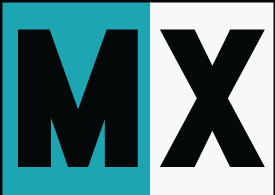
Managing your crypto securely is no small task, especially with hackers becoming more sophisticated every year. Without a reliable hardware wallet, your digital assets are constantly at risk. This is where the Ledger Nano S Plus comes in—a wallet I’ve personally tested and trust. In this Ledger Nano S Plus review, I’ll share everything you need to know to decide if it’s the perfect choice for your needs in 2025.
Ledger Nano S Plus Review: Overview
Price |
$59 |
Security |
CC EAL6+ certified secure chip; offline private key storage. |
Connectivity |
USB Type-C (wired connection only). |
Supported Crypto |
Thousands, including Bitcoin, Ethereum, Solana, USDT, and many more. |
Weight |
21 grams (lightweight and portable). |
Box Contents |
Hardware wallet, USB-C to USB-A cable, 3 recovery sheets, keychain strap, and a getting-started leaflet. |
What is the Ledger Nano S Plus?
The Ledger Nano S Plus is a hardware wallet designed to keep your cryptocurrencies and NFTs safe. It’s like a secure vault for your digital assets, protecting them from hackers and online threats. This is an upgraded version of the original Ledger Nano X, with a bigger display and better functionality.
Unlike software wallets that live on your phone or computer, the Nano S Plus keeps your private keys completely offline. Having tested many wallets over the years, I appreciate how Ledger has made secure crypto storage accessible to both beginners and experienced users. The device is essentially your personal crypto vault that you can carry anywhere at an affordable price.
Design and Build Quality
The moment I unboxed the Nano S Plus, I could tell Ledger didn’t cut corners with build quality. The brushed stainless steel cover gives it a premium feel, while the plastic components keep it lightweight at just 21g. Measuring 62.39 x 17.40 x 8.24mm, it’s compact enough to slip into any pocket or attach to your keychain with the included strap.
I particularly love the upgraded USB-C port – it’s much more convenient than the older micro-USB on previous models. The screen is bigger than the original Nano S, which makes checking addresses and transaction details much more comfortable. The two physical buttons feel solid and responsive, crucial when you’re navigating menus or confirming transactions.
One thing I’ve noticed during daily use is how well it holds up to wear and tear. I’ve been carrying it in my pocket with my keys, and it barely shows any scratches. The build quality actually reminds me of high-end USB drives, but with much better button feel and screen clarity.
Security Features
Let me tell you why I trust this device with my crypto. The Nano S Plus comes with a CC EAL6+ certified secure chip (ST33K1M5) – the same grade of security you’ll find in high-end credit cards and passports. In my experience testing various hardware wallets, this level of certification is a big deal.
The security setup is straightforward but thorough. When you first power it up, you’ll create a PIN code (make it strong!), and then the device generates your private keys. What I really appreciate is that these keys never leave the secure chip – not even you can access them directly. The device also gives you a 24-word recovery phrase that you’ll write down on the included recovery sheets. Keep these safe – they’re your backup if anything happens to your device.
I’ve tested the firmware update process several times, and it’s rock-solid. The device verifies each update’s authenticity before installing, making it practically impossible for hackers to slip in malicious code. What really gives me peace of mind is knowing that even if my computer is compromised, my crypto stays safe because every transaction needs physical confirmation on the device.
One security feature that’s saved me a few times is the transaction verification screen. Before any crypto leaves your wallet, you can verify all the details on the device’s screen. This means even if a hacker somehow manipulates what you see on your computer, you’ll catch it before confirming on the device.
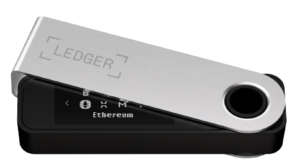
Connectivity and Compatibility
I’ve tested the Nano S Plus across multiple devices, and its USB-C connectivity is a game-changer compared to older models. It works flawlessly with my Windows 11 laptop and my MacBook running Ventura. The device is also fully compatible with Ubuntu 20.04 and 22.04, though I should mention it doesn’t work with ARM processors.
One feature I particularly appreciate is the Android compatibility (Android 10 and up). I can manage my crypto on the go by simply connecting the device to my phone with a USB-C cable. However, I should point out that Chromebook users are out of luck – the device isn’t compatible with these systems. Also, if you’re into crypto mining, you’ll need to look elsewhere as the Nano S Plus isn’t designed for mining operations.
Software Experience: Ledger Live Integration
The Ledger Live app is where the Nano S Plus really shines. I use both the desktop and mobile versions daily, and the experience is seamless. The setup process is straightforward – it took me about 10 minutes to install the app and configure my device for the first time.
What I love most about Ledger Live is how it brings everything together in one place. The portfolio view gives me a clear snapshot of all my assets, and the real-time price updates help me track my investments easily. The interface is clean and intuitive – even my friends who are new to crypto find it easy to navigate.
Trading and swapping crypto within the app is surprisingly simple. I’ve used the swap feature several times to exchange Bitcoin for Ethereum, and the process is smooth. The staking feature is also well-implemented – I’m currently staking ETH and SOL through the app, and monitoring my rewards is straightforward.
Cryptocurrency Support
One of the biggest strengths of the Ledger Nano S Plus is its extensive support for cryptocurrencies and NFTs. It works with 5,000+ coins and tokens, including popular ones like Bitcoin, Ethereum, Solana, and USDT, as well as many smaller or emerging assets. This makes it a versatile choice for anyone with a diverse portfolio.
What really impressed me is how easy it is to manage NFTs alongside crypto assets. The Ledger Live app integrates smoothly, letting you view, organize, and secure your NFTs without hassle.
The staking capabilities are a standout feature. You can stake ETH, SOL, ATOM, and ADA through the device. The process is straightforward: select your asset, choose a validator, and confirm the staking transaction on the device. What’s great is that you maintain control of your tokens while they’re staked – your private keys never leave the secure chip.
One thing that’s particularly useful is how easy it is to add new coins. When I want to store a new cryptocurrency, I just install its app through Ledger Live. The device can hold multiple coin apps simultaneously, though the exact number depends on the size of each app. I currently have about 5-6 different cryptocurrency apps installed, and there’s still room for more.

What’s in the box?
When I unboxed my Ledger Nano S Plus, I was impressed by the premium packaging and attention to detail. Inside the box, you’ll find the hardware wallet itself, which is compact and sturdy. There’s a USB-C to USB-A cable for connecting the device to your computer or compatible Android smartphone.
What I particularly appreciate is the inclusion of three recovery sheets, not just one. These are crucial for writing down your 24-word recovery phrase, and having spares means you can store backups in different secure locations. The getting started leaflet is clear and concise, making the setup process straightforward even for crypto newcomers. The included keychain strap is a nice touch – I’ve attached it to my device, making it easier to carry around while reducing the chance of misplacing it.
Ledger Nano S Plus Review: Pricing
At $59, I believe the Nano S Plus hits a sweet spot in terms of value for money. Having used both cheaper and more expensive hardware wallets, I can confidently say the Nano S Plus offers excellent value. It provides most of the features you’d find in the more expensive Nano X ($149), minus Bluetooth connectivity.
Compared to other hardware wallets in this price range, you’re getting superior build quality, a certified secure chip, and access to Ledger’s excellent ecosystem.
From my experience, investing in a quality hardware wallet like this is worth every penny when you consider what you’re protecting. The peace of mind alone – knowing your crypto is secure from online threats – justifies the cost.
Ledger Nano S Plus Review: Pros and Cons
After using the Nano S Plus as my main hardware wallet for several months, here’s my honest breakdown of its strengths and limitations:
Pros
- Rock-solid security with the CC EAL6+ certified secure chip
- Excellent build quality that feels built to last
- Support 5,000+ cryptocurrencies and NFTs
- User-friendly Ledger Live interface
- Convenient USB-C connectivity
- Comprehensive staking options for multiple cryptocurrencies
- Larger screen compared to the original Nano S
- Regular firmware updates and excellent developer support
Cons
- No wireless connectivity (unlike the Nano X)
- Can feel slightly cramped when managing multiple coin apps simultaneously
- Not compatible with Chromebooks
In my daily use, these cons haven’t significantly impacted my experience, but they’re worth considering depending on your specific needs. The lack of Bluetooth hasn’t bothered me much since I prefer the security of a direct connection anyway.
Should You Buy The Ledger Nano S Plus?
Based on my extensive experience with crypto hardware wallets, I can confidently recommend the Nano S Plus for several types of users. If you’re getting serious about crypto security and want to move beyond exchange wallets or software solutions, this device is an excellent choice. I particularly recommend it for investors who hold multiple cryptocurrencies and want a secure, long-term storage solution.
It’s perfect for mid-level crypto investors who don’t need Bluetooth connectivity and want to save some money compared to the Nano X. I’ve found it especially suitable for NFT collectors and those interested in staking, as the device handles these functions exceptionally well.
However, if you’re completely new to crypto, you might want to start with smaller investments before committing to a hardware wallet. And if you absolutely need Bluetooth connectivity for heavy mobile usage, you might want to consider the Nano X instead. That said, for most users, including myself, the Nano S Plus provides everything needed for secure crypto management at a reasonable price point.

Where to Buy Ledger Nano S Plus
Let me share my personal ordering experience – I strongly recommend buying directly from Ledger’s official website (ledger.com). While you might find cheaper options from resellers, it’s not worth the risk of getting a compromised device. I learned this the hard way when a friend bought one from a marketplace and had to return it due to security concerns.
When I ordered mine, I opted for the standard free shipping option, which took about 10 days to arrive. If you’re in a hurry, the Express Courier option ($30) is worth considering – a colleague chose this and received theirs in just 3 days. Just keep in mind that you might need to pay local taxes and customs fees depending on your location. In my case, I had to pay about $15 in import duties.
The payment process was smooth – I used PayPal, but they accept various payment methods including Apple Pay, Google Pay, and even Bitcoin. I particularly appreciate that they offer crypto payment options – it feels fitting for a crypto hardware wallet! The checkout process was straightforward, and I received tracking information immediately after my order was processed.
Nano S Plus vs Nano X vs Trezor Model One vs SafePal S1
After testing various hardware wallets, here’s how the Nano S Plus stacks up against its main competitors:
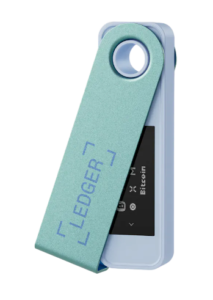
Ledger Nano S Plus |
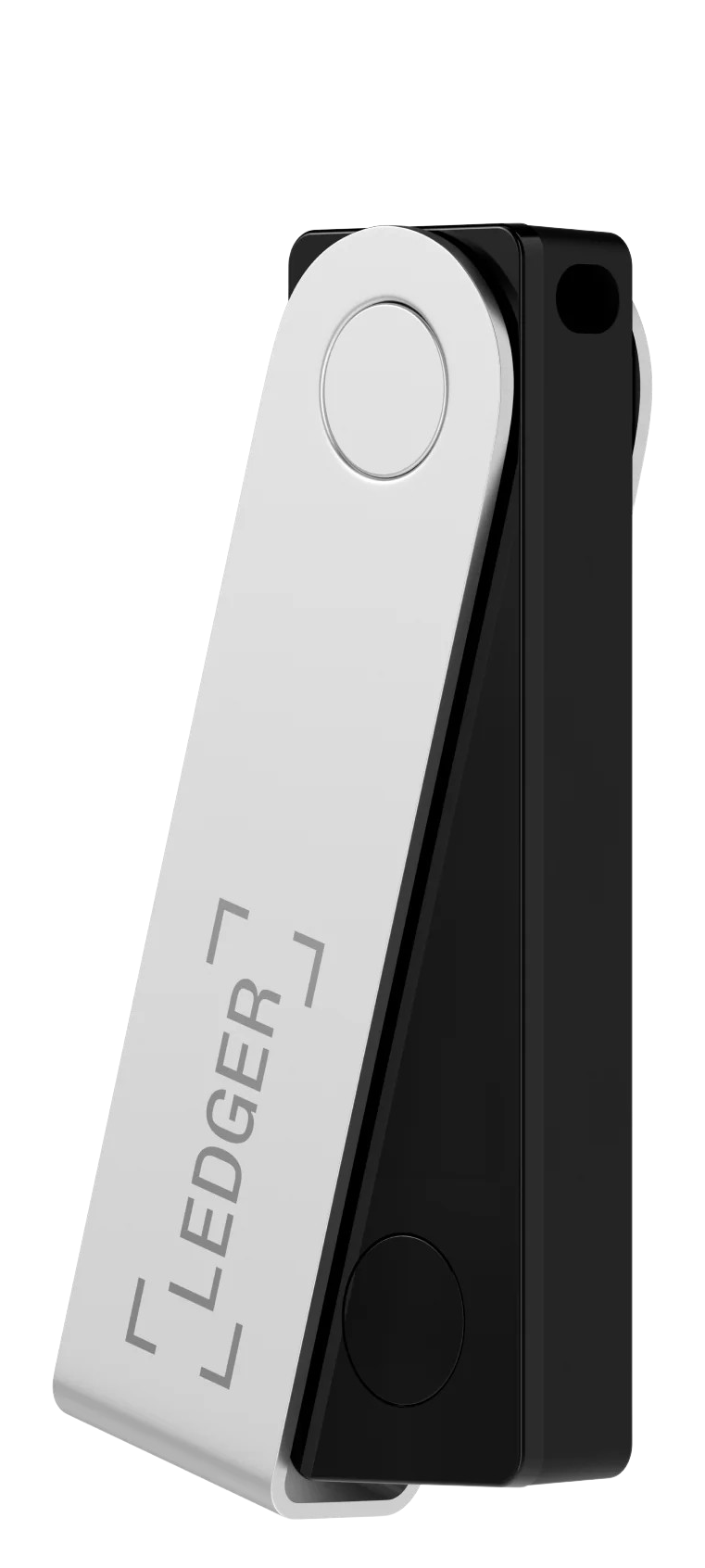
Ledger Nano X |
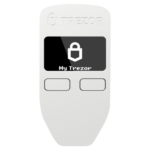
Trezor Model One |
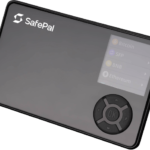
SafePal S1 |
|
|---|---|---|---|---|
Price |
$59 |
$149 |
$49 |
$49.99 |
Security |
CC EAL6+ chip |
CC EAL6+ chip |
PIN & passphrase protection |
EAL 5+ secure element |
Connectivity |
USB-C |
USB-C + Bluetooth |
USB |
QR Code only |
Ease of Use |
8/10 |
8/10 |
7/10 |
8/10 |
Supported Crypto |
5000+ |
5000+ |
1000+ |
9,000+ |
Battery |
No battery needed |
5 hours |
No battery needed |
20 days |
From what I have experienced, while each device has its merits, the Nano S Plus offers the best balance of features and value. It shares the same security standards as the more expensive Nano X, and significantly outperforms the Trezor Model One in terms of security. While the SafePal S1 is cheaper and supports more coins, I find its QR-code-only system less convenient for frequent transactions.
The lack of battery in the Nano S Plus hasn’t been an issue for me since it powers up when connected to a device. This actually makes it more reliable in the long run compared to devices with batteries that can degrade over time.
How to Use the Ledger Nano S Plus Wallet
Let me walk you through getting started with the Nano S Plus, based on my personal experience setting up multiple devices for myself and friends.
Initial Setup
- First things first: inspect your device and make sure the box hasn’t been tampered with.
- Connect your Nano S Plus to your computer using the provided USB-C cable.
- Press both buttons to turn it on – you’ll see the Ledger logo.
- Follow the on-screen instructions to set up your PIN code:
- Choose a strong PIN (I recommend 8 digits)
- You’ll need to enter it twice to confirm
- Write it down somewhere safe!
Setting Up Recovery Phrase
- The device will now generate your 24-word recovery phrase
- Write down each word carefully on the provided recovery sheets
- Triple-check your spelling – one wrong word can lock you out
- The device will ask you to confirm several random words to verify
- Store your recovery sheets in different secure locations
Installing Ledger Live
- Download Ledger Live from Ledger’s official website
- Install and open the application
- Follow the authenticity check process
- Connect your device when prompted
- Update the firmware if requested
Adding Cryptocurrencies
- In Ledger Live, click ‘Manager’
- Connect and unlock your device
- Install the apps for your cryptocurrencies:
- Bitcoin app for BTC
- Ethereum app for ETH and ERC-20 tokens
- Other specific apps for different chains
- Click ‘Add Account’ in Ledger Live
- Select the cryptocurrency
- Follow the account creation process
Making Your First Transaction
- Go to the ‘Send’ tab in Ledger Live
- Select the account you want to send from
- Enter the recipient’s address
- Enter the amount
- Double-check everything
- Confirm the transaction on your device:
- Check the address matches
- Verify the amount
- Approve with both buttons
Security Best Practices
- Never share your recovery phrase with anyone
- Keep your PIN private
- Always verify addresses on the device screen
- Regularly update your firmware
- Make test transactions first
- Back up your recovery phrase multiple times
Ledger Nano S Plus Review: Final Verdict
The Ledger Nano S Plus hits the sweet spot between price, security, and functionality. In a market full of options, it stands out as a reliable, future-proof choice that I continue to trust with my crypto assets. The current Bitcoin bonus makes it an even more compelling purchase. If you’re serious about securing your crypto, this device definitely deserves a spot at the top of your list.
Frequently Asked Questions
1. Does the Ledger Nano S Plus have Bluetooth?
No, the Ledger Nano S Plus does not have Bluetooth. It uses a USB Type-C connection for wired access, ensuring a more secure connection without the risk of wireless vulnerabilities.
2. What coins does the Ledger Nano S Plus support?
The Ledger Nano S Plus supports thousands of cryptocurrencies, including Bitcoin, Ethereum, Solana, USDT, and many more. It also supports NFTs and a wide range of tokens across different blockchains.
3. How many apps can I install on the Ledger Nano S Plus?
The Ledger Nano S Plus can hold up to 100 apps simultaneously, depending on the size of the apps. This is an improvement over the original Ledger Nano S, which could only hold a few.
4. Is the Ledger Nano S Plus safe?
Yes, the Ledger Nano S Plus is highly secure. It features a CC EAL6+ certified secure chip and keeps your private keys offline, making it immune to online attacks and hacks.
5. Can I use the Ledger Nano S Plus with my phone?
Yes, the Ledger Nano S Plus is compatible with Android smartphones (version 10 and up). You can manage your crypto assets using the Ledger Live mobile app.
6. Does the Ledger Nano S Plus work with Mac and Windows?
Yes, the Ledger Nano S Plus works with both Mac (macOS Big Sur and newer) and Windows (10/11). It’s also compatible with Linux (Ubuntu LTS).
7. What happens if I lose my Ledger Nano S Plus?
If you lose your Ledger Nano S Plus, you can recover your assets using the 24-word recovery phrase provided during setup. As long as you’ve backed up this phrase securely, you can restore your wallet on a new Ledger device.
